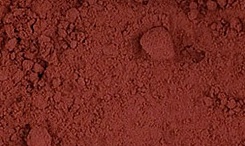OCRA ROSSA
per flauto, fagotto e pianoforte / for flute, bassoon and piano (2014)
dedicato a / dedicated to: Stefano Agostini, Paolo Carlini e Daniel Rivera
EDIZIONI SUVINI ZERBONI - MILANO
 YouTube
YouTube
 pages 1 - 2
pages 1 - 2

Ocra rossa è un lavoro che, salvo brevi eccezioni, si muove nell'ambito di dinamiche assai contenute e caratterizzato da una certa rarefazione degli eventi, via via più evidente avvicinandosi all'epilogo.
Una linea del fagotto nel registro medio-acuto, caratterizzata dalla ricorrente terza minore iniziale e figura guida dell'intero lavoro, viene costantemente avvolta e riverberata dagli altri strumenti.
Frustrata nei suoi tentativi di espansione, essa precipita improvvisamente nel registro grave, dando luogo alla prima apparizione di un episodio assai violento e contrastato, sia pure nella sua fugacità.
Il ritorno alla situazione iniziale porta, in maniera non rettilinea, ad una pagina centrale caratterizzata da un estremo sgretolamento delle componenti, con i due fiati cristallizzati su suoni tenuti a lungo e il pianoforte a proporre materiali puntiformi, polverizzati.
Il ritorno momentaneo dell'episodio violento e di una finale riapparizione della terza minore distesa del fagotto porta alla conclusione, nella quale ogni gesto appare congelato, privo di residua direzionalità.
Del titolo, oltre alle valenze evocative che non necessitano di spiegazioni apposite, occorre dire che esso può svelare allusivamente il nucleo di provenienza di ogni materiale e proporzione del pezzo, ovvero alcuni frammenti tratti da The Carpet Crawler, brano che forse qualcuno, se vorrà, potrà ritrovare nella sua memoria; un tributo affettivo e personale già manifestato nel recente Crawler per ensemble, senza nessuna implicazione stilistica né, tanto meno, citazioni dirette.
Ocra rossa is a work that, apart from brief exceptions, moves within a quite contained range of dynamics and is characterized by a certain rarefaction of events that becomes increasingly evident towards the conclusion.
A line on the bassoon in its medium-high register, characterized by recurrent initial minor third that is the guiding figure throughout the work, is constantly enshrouded and reverberated by the other instruments.
Frustrated in its attempts to expand, it suddenly plunges into the low register, giving rise to the first appearance of a quite violent and contrasted, albeit fleeting, episode.
The return to the opening situation leads, in a not straightforward fashion, to a central part characterized by an extreme crumbling of the components, with the two wind instruments crystallized on long held notes while piano offers punctiform, pulverized materials.
The momentary return of the violent episode and a final reappearance of the drawn out minor third on the bassoon brings us to the conclusion, in which every gesture appears frozen, without any direction.
Regarding the title, apart from the references evoked that need no special explanation, it is worth pointing out that it can allusively reveal the core of the origins of the material and proportion of the piece, that is to say some fragments taken from The Carpet Crawlers, a piece that some people, if they want, will be able to find in their memory; a fond and personal tribute already shown in my recent Crawler for ensemble, without any stylistic implication nor, indeed, any direct quotations
